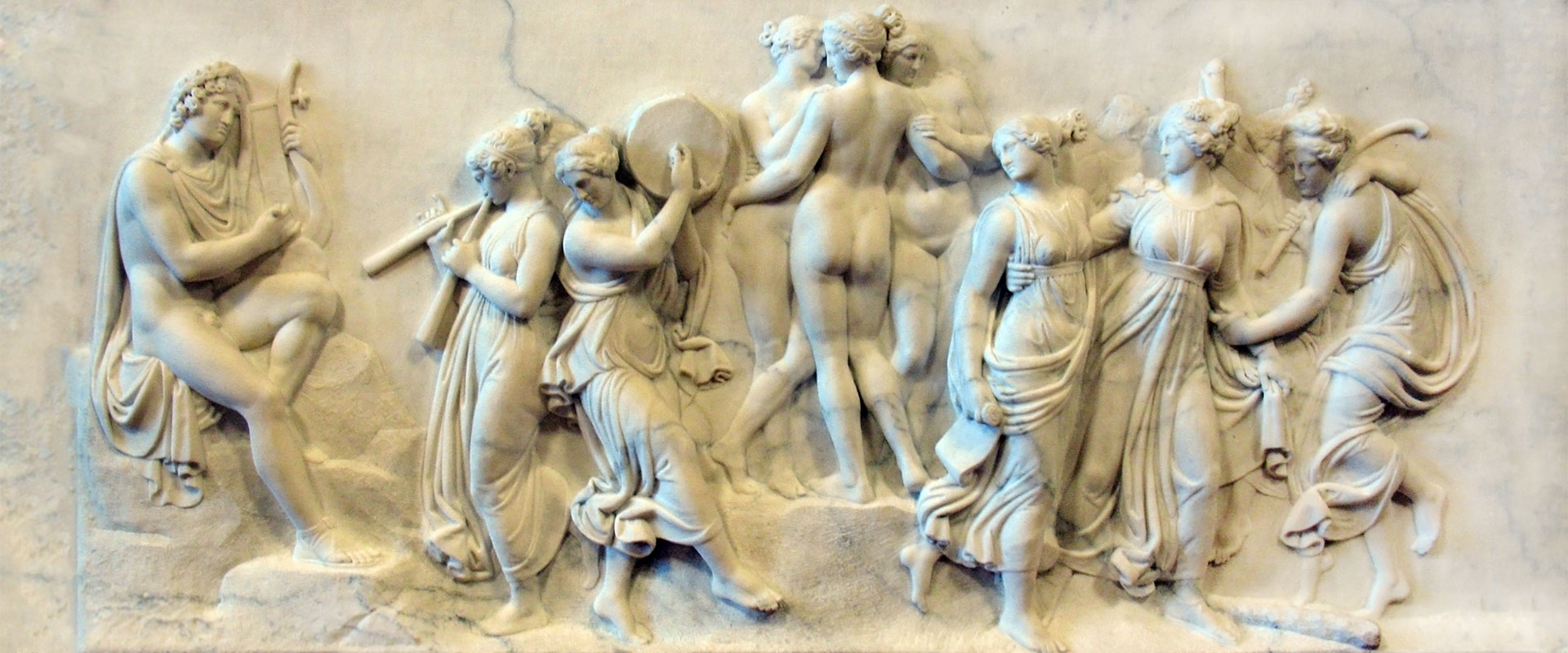About the Topics
The essays or monographs in this section will cover a broad range of subject matter. They are organized to facilitate efficient reading and research by the curious reader or the harried student.
Each essay will be divided into 4 layers. The first layer will consist of an abstract. If that is found sufficiently intriguing, you can navigate to the second layer for a schematic of the topic in question. The next layer down will consist of a full essay and the fourth layer will contain an annotated bibliography to assist you in further reading.
About this Graphic
The Dance of the Muses at Mount Helicon.
Frieze: Muses dancing around Apollo and the three graces by Thorvaldsen Danish, 19th century. 30 Inches High x 63 Inches Wide.
This frieze was executed by Bertel Thorvaldsen in the classical style in 1807. Originally created in 1804 at Montenero in 1816 Thorvaldsen made modifications to the heads of Apollo and Thalia and added a swan to the foreground. This piece was purchased by the Baron von Schubat for his villa at Montenero and can now be seen in the Thorvaldsen Museum in Copenhagen. Depicted in the relief is Apollo seated on a rock, playing the harp, with the nine muses dancing around the Three Graces.
The ancients thought that the muses along with Apollo were responsible for inspiring humans to create works of art, science and music, in fact, all learning. Their origins go back to Homer and Hesiod (the 8th or 7th century BC) but may have their roots even further back than that. The muses have sometimes been referred to as water nymphs and been associated with the spring Helicon. One myth claims that Pegasus (the winged horse) grazed his hooves at Helicon and four sacred springs erupted from the earth. The muses were thought to have been born from these springs. If that is case, then the idea of the muses stretches back to the time of Perseus, sometime in bronze-age Mycenaean Greece.
For the Lydian poet Alcman (7th century BC), a composer of Spartan choral music, the muses predated the Olympian gods, being the offspring of Uranus and Gaia. There is even a tradition that ties them to the Egyptian god Osiris and associates their activity as bringers of civilization, including teaching the art of crop cultivation.
In any case, the association of the muses with particular genres in the arts was a much later Hellenistic invention.
The Muses were the nine virgin daughters of Zeus and Mnemosyne (memory personified). They were each attributed with the following:
Clio: History
Melpomene: Tragedy
Thalia: Comedy
Euterpe: Lyric poetry
Terpsichore: Dance
Calliope: Epic poetry
Erato: Love poetry
Urania: Astronomy
Polyhymnia: Sacred song
They were taken seriously by artists and writers who invoked them seeking inspiration for their work or at least answers to some of their questions. Thus Virgil in his Aeneid writes
(Translation; Robert Fagles) “Tell me, Muse, how it all began. Why was Juno outraged? What could wound the Queen of the Gods with all her power? Why did she force a man, so famous for his devotion, to brave such rounds of hardship, bear such trials? Can such rage inflame the immortals’ hearts?”

